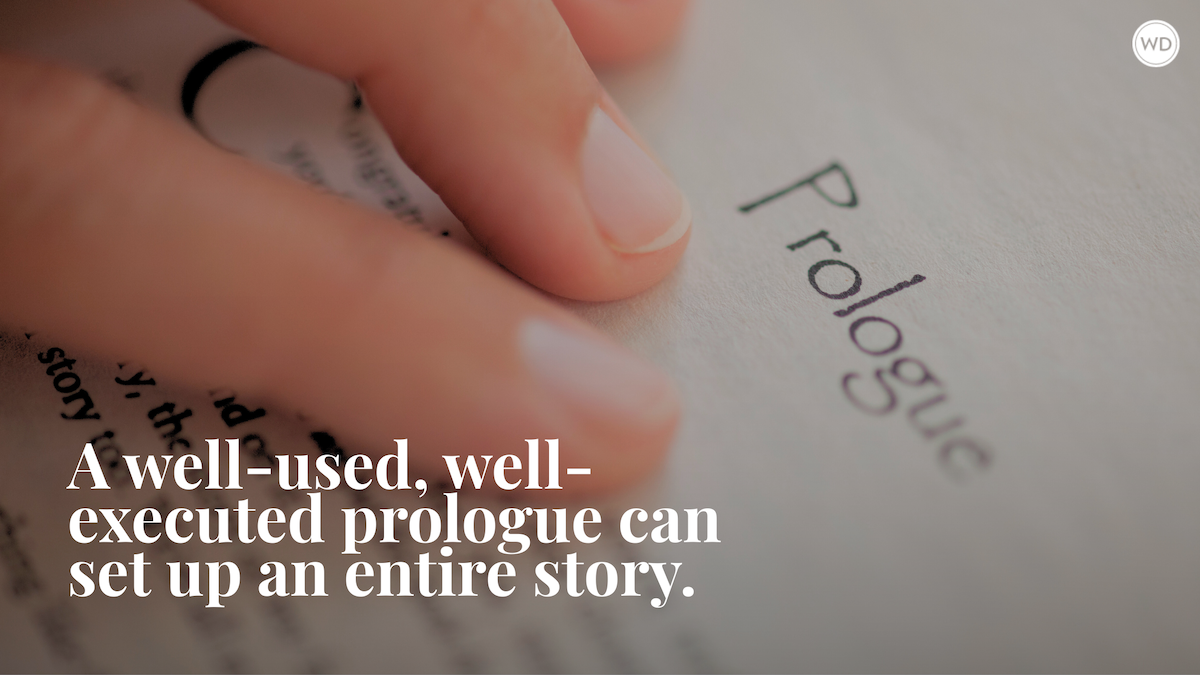Writing Two-Sword Style Fighting (FightWrite™)
This month, trained fighter and author Carla Hoch discusses the history of two-sword fighting, the pros and cons for your characters, and more.
I’ve just returned from the Writer’s Digest Conference and what a conference it was. There were great speakers, informative sessions, and more food than you could shake a stick at. For my part, I had two successful classes with students who asked great questions. I will talk about one of those questions today. For this month’s FightWrite™ post on the WD blog, we will be looking at the two-sword fighting style.
Is the Two-Sword Style a Thing?
I am asked about the two-sword style at almost every writer’s conference. The first thing I am often asked is simply: Is it a thing? We see it in movies/TV shows such as “The Walking Dead”, John Wick 4, Deadpool, and Crouching Tiger, Hidden Dragon. Are those directors and screenwriters drawing from history or simply giving viewers a cliché they so love? And, yes, viewers love the two-sword style. I know that because writers seem to gravitate toward it like moths to porch lights.
The two-sword style is a thing. In fact, some weapons, such as butterfly swords, were made specifically for such a fighting style. Two-sword styles span across cultures and continents. That said, it wasn’t the most common manner of using edged weapons, and there is a good reason for that.
Edged Weaponry
An edge is the sharp portion of a blade. A blade may have one edge or two. Steak knives have a blade with one edge. Daggers have a blade with two edges. Any weapon with an edge is an edged weapon.
It’s important to understand what edged weaponry is because what many consider a two-sword style is actually a style of two, edged weapons, only one of which might be a sword. Many times, the second weapon is a type of knife. If you have ever taken any of my classes or read my books, you will hear me say that where there is a sword, there is a knife. There is a reason for that.
Swords are excellent weapons but not all-encompassing. In order to be deadly, a sword has to have movement to slash or stab. For movement, there has to be ample space. If two combatants are in close quarters, there may not be enough room for either to use their sword effectively even with a reverse grip. That’s where the knife comes into play. Even if your character does wield two swords, they will also carry a knife as a tertiary weapon.
Primary, Secondary and the Horrible Left Hand
Before jumping into wielding two, edged weapons together, we have to understand the concept of a primary and secondary weapon. A primary weapon is generally the weapon wielded in the dominant hand. It is considered the primary weapon because of the greater dexterity in the dominant hand. It may also be considered primary because of its lethality. That said, the more lethal the weapon, the more one would want to carry it in the hand over which one has the most control.
Ambidexterity
There are people who use each hand with the same ease and control. These people are rare and incredibly gifted when it comes to fighting of any kind. However, historically, ambidextrous people wielded the primary weapon in the right hand as left-handedness was not celebrated — to put it mildly.
In Europe, where many sword-centric fantasy works are set, the languages tell the story of how being left-handed was once perceived. In French, Spanish, and Italian, the words for left and left-handed, can still be synonymous with clumsy, sinister and underhanded. In German, the word for left can be used to say, on the wrong side. In Asia, Africa, and the Middle East, the attitude was once much the same. So, even if your character is ambidextrous, their primary weapon will likely be in the right hand.
Requirements for Wielding Two, Edged Weapons
In order to wield two, edged weapons at the same time, each weapon has to meet a few requirements. One, each weapon must have a weight distribution and balance that allows it to be wielded with only one hand. Some edged weapons, such as a broad sword, required two hands to wield because of its weight. That would make wielding a secondary weapon impossible.
Two, each edged weapon must have a design that compliments the other. If one weapon is very forward heavy, like a battle axe, it might be difficult to wield with another weapon. Also, if the primary weapon is a melee weapon, such as an axe, hammer, or club, it is often wielded with a shield which prohibits the use of a secondary blade.
Three, the weapon must have a handle that allows it to be wielded with the desired hand. Some edged weapons have a hand guard that is only suited for one hand. Usually that hand is the right hand. To have an edged weapon with a hand guard that is side specific for the left hand, a weapon might have to be specially made. That is expensive.
Issues Associated with Wielding Two, Edged Weapons
Wielding two, edged weapons was absolutely doable. I have been introduced to one such style in Filipino Martial Arts. That begs the question: Why didn’t more people wield two? If one knife is good, shouldn’t two be even gooder? Yes and no.
Amazon
[WD uses affiliate links.]
The Benefits
The benefits of a two-sword style begin before the swords are even put to use: It is intimidating. Dealing with two moving blades is highly perilous, and the possibility is enough to make many would-be attackers stand down. Another benefit is the most obvious. The wielder has twice the edges. Also, if the weapons are of differing lengths, the wielder can easily transition to in-fighting (close quarters) without having to grab the secondary blade.
The Detriments
When fighting with edged weaponry, the open hand is very important even though it does not hold a weapon. It’s used for balance, parrying, grabbing, punching, getting up from the ground, and holding a shield. With a weapon in hand, some of those actions are more difficult or impossible.
When both hands hold a weapon, the wielder is in more danger. The combatant has to be mindful not to stab or slash their own darn self. They have to have an efficient way to carry and draw multiple weapons and still carry a knife. The wielder must also have the means to maintain all the weapons.
The Biggest Issue
The most difficult part of a character wielding two, edged weapons is not you, the writer, understanding how the character would use those weapons. It is also not showing the reader why that style is culturally appropriate or practical for the character. The hardest part of having our character wield two, edged weapons is writing it. Writing sword work for one sword can be difficult. Writing movement for two swords can be more challenging.
If you are a writer who excels in writing sword or knifework, writing two swords may present no challenge for you. Even so, consider why you have chosen two swords. Consider where the character is geographically and physically located and if them having two swords makes sense. Consider how they will carry the two swords. And, if your chosen area of carry is in sheaths on the back a lá Deadpool or Michonne from “The Walking Dead”, stop. You do not understand enough about wielding two swords to write it. Why? Well, that will be our next post!
Until the next round with FightWrite™ on the WD Blog, get blood on your pages.
Carla Hoch is the award-winning blogger of FightWrite® and author of the Writer’s Digest book Fight Write: How to Write Believable Fight Scenes. She is a WDU instructor who regularly teaches on the craft of writing fight scenes, action, and violence as well as the mechanics of fighting for writers. Carla is a world champion jiujitsu player and has experience in almost a dozen fighting styles. She lives and trains outside Houston, Texas.








